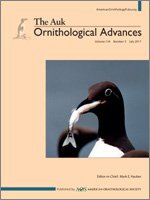Albatross fossils have been collected from the late Oligocene Lincoln Creek Formation and the early/middle Miocene Astoria Formation near the townsite of Knappton, Pacific County, Washington (USA). The albatross from the Lincoln Creek Formation, Diomedavus knapptonensis, n. gen. et sp., is smaller than all extant albatrosses and represents the oldest published fossil albatross from the North Pacific Basin. Diomedavus knapptonensis is clearly distinguished from extant albatrosses in several osteological features; some are likely plesiomorphic, supporting a phylogenetic position outside the crown group. The unusual shape of the deltopectoral crest of the humerus suggests that D. knapptonensis also differed from extant albatrosses in its flight performance. A partial skeleton from the Astoria Formation likely represents another new albatross species; however, it is not named because there is no overlap with the skeletal elements of other fossil Diomedeidae. This species, here informally termed the “Astoria Formation albatross,” also identified as a stem group representative of the Diomedeidae, differs from extant species in subtle features of the leg bones. Therefore, stem group albatrosses inhabited the North Pacific Basin before the emergence of the taxon Phoebastria, which includes extant North Pacific albatrosses. Cenozoic albatrosses were widely distributed in the Northern Hemisphere and the complex biogeographic history of the Diomedeidae may have been shaped by changes in global marine or atmospheric circulation systems and the loss of safe breeding grounds.
How to translate text using browser tools
7 June 2017
Oligocene and Miocene albatross fossils from Washington State (USA) and the evolutionary history of North Pacific Diomedeidae
Gerald Mayr,
James L. Goedert

The Auk
Vol. 134 • No. 3
July 2017
Vol. 134 • No. 3
July 2017
Astoria Formation
biogeography
Diomedavus knapptonensis
evolution
fossil birds
Lincoln Creek Formation
n. gen. et sp.




